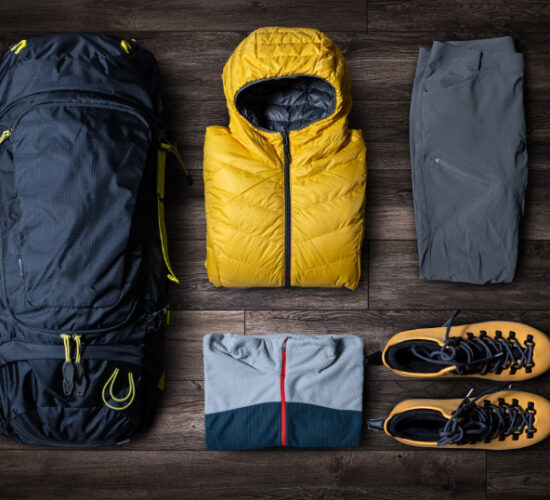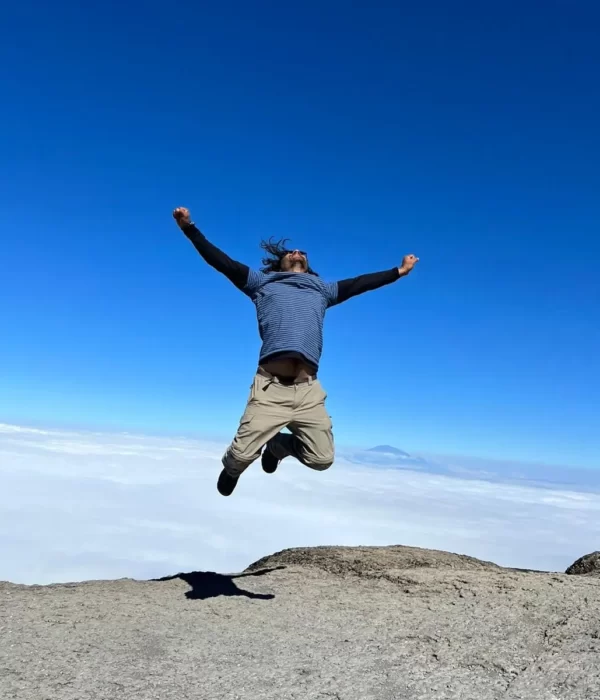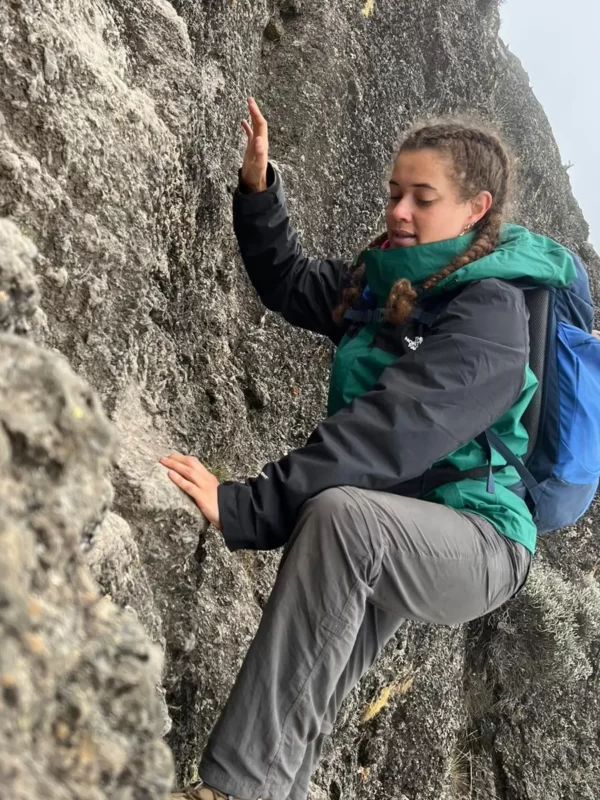Climbing the Barranco Wall on Mount Kilimanjaro, otherwise known as the Kissing Rock, poses zero risks to your well-being beacause in reality, it is simply a rock-shaped staircase located between the Karanga Valley and the Barranco Valley on Kilimanjaro. Many hikers are intimidated by images of the large massif online, which appears to be a dangerous cliff due to angled shots of the molten rock. However upon closer inspection, you’ll come to realize the Barranco Wall is not a dangerously unsafe ledge, but rather a well-formed volcanic pile on the southern base of Kibo peak. You’ll need no technical skills or equipment necessary to navigate past the Kissing Rock because as long as you can leap over three 9-inch stairs at a time, you should have no difficulty getting past the Barranco Wall during your hike.
The Barranco wall on Kilimanjaro was formed by a process known as erosion. What happened over time is that the Barranco River, which flows from Kibo peak, cut through the rock and created a steep-sided valley which is known as the Barranco Valley today. In addition, the constant freezing and thawing of water in the valley also contributed to the formation of the wall. As the freezing water expanded, it managed to break apart the rock and create a beaten path for hikers to climb onto the Karanga Valley. Moreover, the movement of glaciers and other geological forces also played a role in shaping the wall.
How To Get Past The Kissing Rock On Kilimanjaro?
- Stability — Ballance is key when navigating past the Kissing Rock. Since there are no guard railings, you and many other hikers will have to rely on your legs and core strength in order to hold balance as you make your way past the molten stairs. More importantly, good equipment is just as important when proping up yourself as you climb up the Barranco Wall. You’ll require high-ankle boots that are sturdy with a good and firm grip in order to keep yourself firmly steady as you make it past the Barranco wall.
- Hand Grip — A strong hand grip with quick arm reflexes is important once at the Kissing Rock. That’s because there are no guard railings and to gain ballance, you’ll have to lean over and cleave onto a crimp, sloper or slimper in order to sidepull yourself along the Wall. Though this may seem technically advanced, many hikers with no rock climbing experience are able to get past without any fuss.
1. Death Rates On The Barranco Wall
Although an average of 10 deaths are reported on Kilimanjaro every year, there have been no official incidents that have been reported on the Barranco Wall. That’s because the major challenge many hikers face on Mount Kilimanjaro is altitude sickness. Dying on the Barranco Wall is unlikely since the massif doesn’t have a long drop nor are there rockfalls lodged in its seams, unlike the Western Breach on Kilimanjaro. At worst, you may just sprain your ankle trying to sidepull yourself along the top but it’s very unlikely that you’ll die.
2. The Barranco Wall’s Elevation & Prominence
The Barranco Wall’s elevation sits at 3,950m (12,959ft) with a prominence of 257m (843ft). What this means is that the base of the Barranco Wall is around 3,693m (12,116ft) above sea level and the Wall itself rises approximately 257m (843ft) from it’s plateau base, at the Barranco Valley. It may seem very high, but it is not! The trick is to go slowly and to be sure of each footing you take as you climb up the wall.
3. Stunning Views Of Trees & Glaciers From The Barranco Camp On Kilimanjaro
The Barranco Camp on Kilimanjaro is a campsite located just before the Barranco Wall. It is situated at an altitude of 3,693m (12,116ft) and is typically the fourth or fifth campsite visited by hikers trekking the Machame or Lemosho routes on Kilimanjaro. You’ll find the camp perched on a valley surrounded by spectacular views of Kibo peak, Mawenzi peak and the Heim Glacier. It is often a popular spot for climbers to rest and acclimatize before continuing their ascent up the Barranco Wall.
4. Getting To The Barranco Valley On Kilimanjaro
Start Your Trip To The Mountain From Kilimanjaro Region or Arusha Region, Tanzania
When you arrive at Kilimanjaro International Airport, Tanzania, you’ll either be transferred to Kilimanjaro Region or Arusha Region. These are the main starting points for many Kilimanjaro expeditions because most tour operators, running hiking trips up the mountain, have their base established in either region. This implies you’re bound to spend a night or two, resting in either region, before starting your trek at Kilimanjaro National Park. The good news is that both regions are bustling with activity and it’ll be hard not to find plenty of good restaurants, stores, or rental options to visit before your Kilimanjaro trek.
Trek The Lemosho Route
One way to get to the Barranco Wall is by trekking the 7 or 8 day Lemosho route. This is the best performing route on Mount Kilimanjaro, offering scenic viewpoints, great acclimatization opportunities and an easy summit. The trek starts off at Lemosho Gate, past Shira Camps, onto Lava Tower, before arriving at Barranco Valley.
Trek The Machame Route
Another way to get to the Barranco Wall is by trekking the 6 or 7 day Machame route on Mount Kilimanjaro. This trail also offers great acclimatization opportunities, scenic viewpoints and is generally easy underfoot. The trek on this route will begin at the Machame Gate, past Shira Camps, onto Lava Tower, before arriving at Barranco Valley. The Machame and Lemosho routes are essentially the same trail, except for the first two days of climbing.






